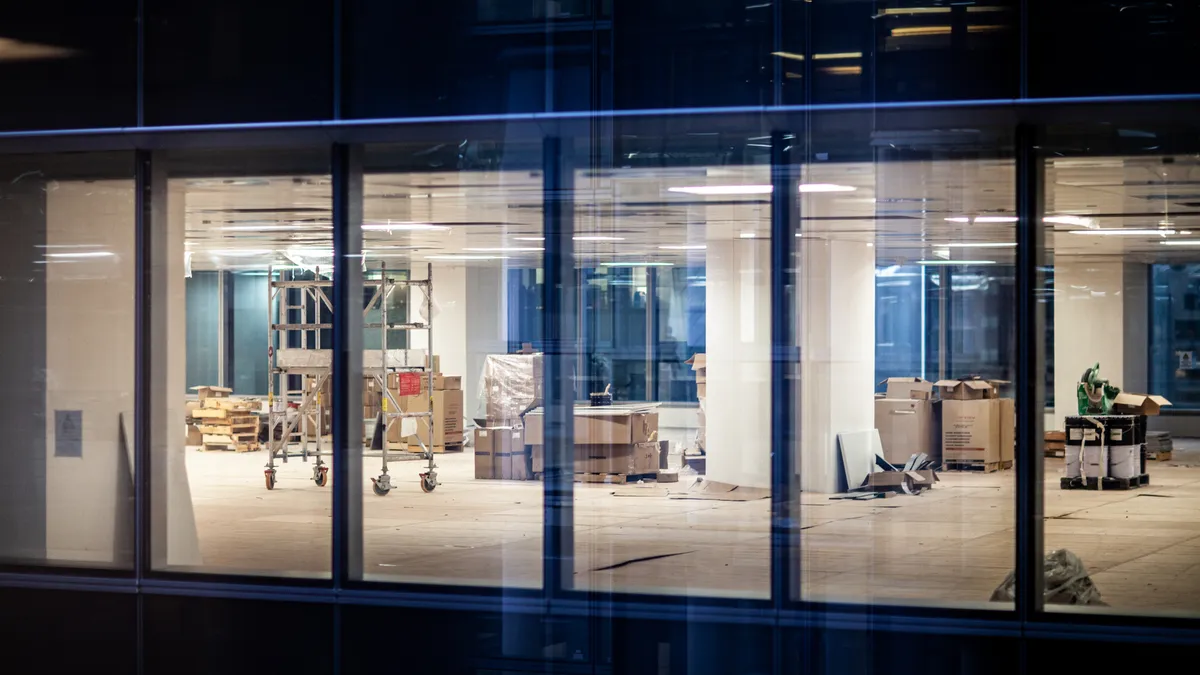Dive Brief:
- U.S. building emissions increased 3% from 2010 to 2020, and without significant interventions, this trend looks set to continue through 2050, according to a new body of research conducted by sustainability consulting firm 3Keel and building manufacturer Kingspan.
- That performance contrasts with reductions seen in other G20 nations, the firms’ November 2023 Global Retrofit Index Interim Report found.
- Over the next 20 years, the U.S. must cut building emissions by an additional 73% to align with national net-zero emissions goals, according to a Nov. 14 release Kingspan shared with Facilities Dive.
Dive Insight:
The study, which builds on an analysis conducted in 2022, assessed historical building emission trends and retrofit rates to pinpoint disparities between current initiatives and measures required to meet climate change goals. Barriers to retrofitting national building stocks that the study identified include workforce skills shortages, access to private investment and a limited awareness among the public, according to the report.
Even as GHG reductions in buildings are stalling in key European countries and starting to plateau in the UK, U.S. buildings’ rising demand for energy is expected to counteract future energy efficiency gains, resulting in a net increase in building emissions, the report said, citing a 2018 decarbonization brief from the Center for Climate and Energy Solutions.
3Keel and Kingspan’s report suggests that retrofitting can accelerate decarbonization measures in buildings, creating new jobs and improving occupant health. The five “crucial enablers” of a successful retrofit implementation, the report said, involve setting net-zero building performance standards, developing a national retrofit plan, providing financial incentives and support, upskilling the workforce and scaling that supply chain and promoting best practices and data transparency.
Federal, regional and local government bodies must collaborate to create “consistent and stringent building standards,” accompanied by legislative implementation frameworks, to ensure that buildings are able to comply with net-zero standards, the report says. However, the levels of funding that the Inflation Reduction Act provides “do not appear to be sufficient to meet the size of the [emissions reduction] challenge,” the report states, citing a 2022 study by Rhodium Group that examines the IRA’s impact on emissions.
Brent Trenga, Kingspan’s director of sustainability in North America, attributes the U.S. building emissions increase, in part, to delays, postponements and ambiguities in updates to building energy codes across many U.S. states. “Building codes are not moving fast enough,” Trenga said in an interview. “The adoption of building codes and energy codes goes through very long cycles … and each state has its own ability to adopt [these codes] whenever it wants.”
Delays in code adoption and implementation have been partially driven by pushbacks from facilities managers, architects and builders amid concerns about prohibitive costs. Wisconsin, for example, blocked a proposed commercial building code update that advocates said would reduce emissions and generate more energy and cost savings following opposition from state building and contractor associations.
On the upside, costs of moving away from fossil fuel use in buildings are becoming less cumbersome, Trenga said. “An easy step to decarbonize is buying renewable energy,” he said. “Buildings that are not in urban contexts … should really be looking at [clean] energy and on-site photovoltaic generation. If that’s not available, the next logical step is buying renewable energy directly from the utility grid.”















